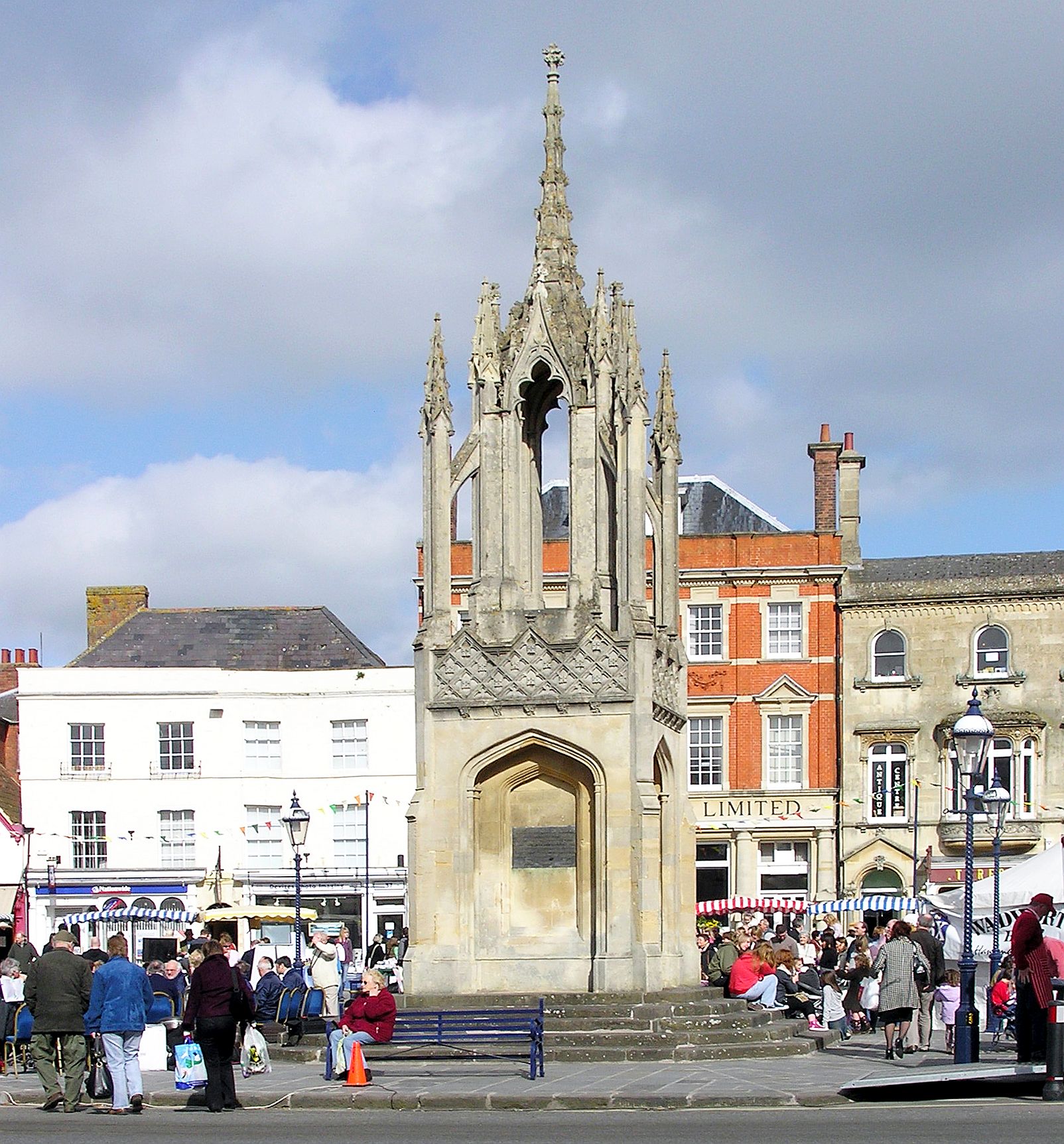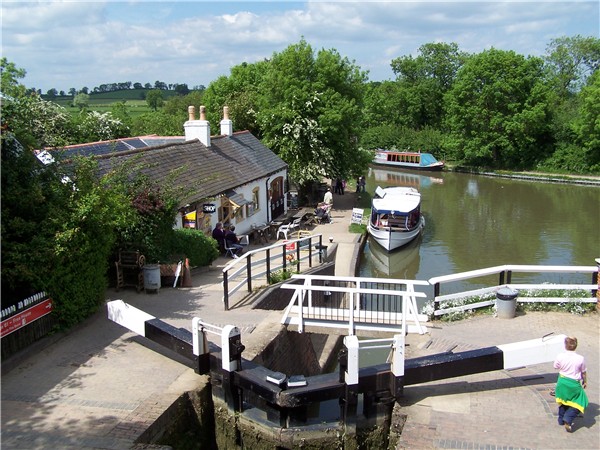|
Gongoozler
A gongoozler is a person who enjoys watching activity on the canals of the United Kingdom. The term is also used more generally to describe those who harbour an interest in canals and canal life, but do not actively participate. Etymology "Gongoozler" may have been canal workers' slang for an observer standing apparently idle on the towpath. Though it was used derisively in the past, today the term is regularly used, perhaps with a little irony, by gongoozlers to describe themselves and their hobby. The word may have arisen from words in Lincolnshire dialect: ''gawn'' and ''gooze'', both meaning to stare or gape. It might be presumed that such an expression would date from the nineteenth century, when canals were at their peak, but the word is only recorded from the end of that century or the early twentieth. It was given wider use by the late L. T. C. Rolt, who used it in his book about canal life, ''Narrow Boat'', in 1944. A ''gawn'' is also a small ship of lading, such as a ... [...More Info...] [...Related Items...] OR: [Wikipedia] [Google] [Baidu] |
Railfan
A railfan, rail buff or train buff (American English), railway enthusiast, railway buff or trainspotter (Australian/British English), or ferroequinologist is a person who is recreationally interested in trains and rail transport systems. Railfans often combine their interest with other hobbies, especially photography and videography, radio scanning, railway modelling, studying railroad history and participating in railway station and rolling stock preservation efforts. There are many magazines and websites dedicated to railfanning and railway enthusiasts, including ''Trains'', ''Railfan & Railroad ''Railfan & Railroad'' is an American monthly magazine that has been in publication since the 1970s. It was the first magazine title established in-house by Carstens Publications. As a magazine dedicated to trains and rail transportation, it stands ...'', ''The Railway Magazine'', ''Locomotive Publishing Company, Locomotive Magazine'', and ''Railway Gazette International''. Other n ... [...More Info...] [...Related Items...] OR: [Wikipedia] [Google] [Baidu] |
Grand Union Canal
The Grand Union Canal in England is part of the British canal system. It is the principal navigable waterway between London and the Midlands. Starting in London, one arm runs to Leicester and another ends in Birmingham, with the latter stretching for with 166 locks from London. The Birmingham line has a number of short branches to places including Slough, Aylesbury, Wendover, and Northampton. The Leicester line has two short arms of its own, to Market Harborough and Welford. It has links with other canals and navigable waterways, including the River Thames, the Regent's Canal, the River Nene and River Soar, the Oxford Canal, the Stratford-upon-Avon Canal, the Digbeth Branch Canal and the Birmingham and Fazeley Canal. The canal south of Braunston to the River Thames at Brentford in London is the original Grand Junction Canal. At Braunston the latter met the Oxford Canal linking back to the Thames to the south and to Coventry to the north via the Coventry Canal. "Grand ... [...More Info...] [...Related Items...] OR: [Wikipedia] [Google] [Baidu] |
Trainspotting (hobby)
A railfan, rail buff or train buff (American English), railway enthusiast, railway buff or trainspotter (Australian/British English), or ferroequinologist is a person who is recreationally interested in trains and rail transport systems. Railfans often combine their interest with other hobbies, especially photography and videography, radio scanning, railway modelling, studying railroad history and participating in railway station and rolling stock preservation efforts. There are many magazines and websites dedicated to railfanning and railway enthusiasts, including ''Trains'', ''Railfan & Railroad'', ''The Railway Magazine'', '' Locomotive Magazine'', and ''Railway Gazette International''. Other names In the United Kingdom, rail enthusiasts are often called trainspotters or anoraks. The term ''gricer'' has been used in the UK since at least 1969 and is said to have been current in 1938 amongst members of the Manchester Locomotive Society, according to the ''Oxford English Dic ... [...More Info...] [...Related Items...] OR: [Wikipedia] [Google] [Baidu] |
Boat Lift
A boat lift, ship lift, or lift lock is a machine for transporting boats between water at two different elevations, and is an alternative to the canal lock. It may be vertically moving, like the Anderton boat lift in England, rotational, like the Falkirk Wheel in Scotland, or operate on an inclined plane, like the Ronquières inclined plane in Belgium. History A precursor to the canal boat lift, able to move full-sized canal boats, was the tub boat lift used in mining, able to raise and lower the 2.5 ton tub boats then in use. An experimental system was in use on the Churprinz mining canal in Halsbrücke near Dresden. It lifted boats using a moveable hoist rather than caissons. The lift operated between 1789 and 1868,Charles Hadfield ''World Canals: Inland Navigation Past and Present'', p. 71, and for a period of time after its opening engineer James Green reporting that five had been built between 1796 and 1830. He credited the invention to Dr James Anderson of Edinburgh ... [...More Info...] [...Related Items...] OR: [Wikipedia] [Google] [Baidu] |
Staffordshire
Staffordshire (; postal abbreviation Staffs.) is a landlocked county in the West Midlands region of England. It borders Cheshire to the northwest, Derbyshire and Leicestershire to the east, Warwickshire to the southeast, the West Midlands County and Worcestershire to the south and Shropshire to the west. The largest settlement in Staffordshire is Stoke-on-Trent, which is administered as an independent unitary authority, separately from the rest of the county. Lichfield is a cathedral city. Other major settlements include Stafford, Burton upon Trent, Cannock, Newcastle-under-Lyme, Rugeley, Leek, and Tamworth. Other towns include Stone, Cheadle, Uttoxeter, Hednesford, Brewood, Burntwood/Chasetown, Kidsgrove, Eccleshall, Biddulph and the large villages of Penkridge, Wombourne, Perton, Kinver, Codsall, Tutbury, Alrewas, Barton-under-Needwood, Shenstone, Featherstone, Essington, Stretton and Abbots Bromley. Cannock Chase AONB is within the county as well as parts of the ... [...More Info...] [...Related Items...] OR: [Wikipedia] [Google] [Baidu] |
Fradley Junction
Fradley Junction () is a canal junction between Fradley and Alrewas near Lichfield, Staffordshire, EnglandOS Explorer Map 245: The National Forest :(1:25 000) :Map Details retrieved 11 April 2013 and the point at which the Coventry Canal joins the Trent and Mersey Canal. It opened in 1790, and several of the buildings around it, including The Swan public house, are grade II listed structures. ...
|
Caen Hill Locks
Caen Hill Locks () are a flight of 29 locks on the Kennet and Avon Canal, between Rowde and Devizes in Wiltshire, England. Description The 29 locks have a rise of 237 feet in 2 miles ( in ) or a 1 in 44 gradient. The locks come in three groups: the lower seven locks, Foxhangers Wharf Lock to Foxhangers Bridge Lock, are spread over ; the next sixteen locks form a steep flight in a straight line up the hillside and are designated as a scheduled monument and are also known as one of the Seven Wonders of the Waterways. Because of the steepness of the terrain, the pounds between these locks are very short. As a result, fifteen of them have unusually large sideways-extended pounds, to store the water needed to operate them. A final six locks take the canal into Devizes. The locks take 5–6 hours to traverse in a boat. The side pounds, the areas around them and adjoining fields to the north, are managed as nature habitat by the Canal & River Trust. Over 30,000 trees were planted ... [...More Info...] [...Related Items...] OR: [Wikipedia] [Google] [Baidu] |
Devizes
Devizes is a market town and civil parish in Wiltshire, England. It developed around Devizes Castle, an 11th-century Norman architecture, Norman castle, and received a charter in 1141. The castle was besieged during the Anarchy, a 12th-century civil war between Stephen of England and Empress Matilda, and again during the English Civil War when the Cavaliers lifted the siege at the Battle of Roundway Down. Devizes remained under Royalist control until 1645, when Oliver Cromwell attacked and forced the Royalists to surrender. The castle was Slighting, destroyed in 1648 on the orders of Parliament, and today little remains of it. From the 16th century Devizes became known for its textiles, and by the early 18th century it held the largest corn market in the West Country, constructing the Corn Exchange in 1857. In the 18th century, brewing, curing of tobacco, and Snuff (tobacco), snuff-making were established. The Wadworth Brewery was founded in the town in 1875. Standing at the w ... [...More Info...] [...Related Items...] OR: [Wikipedia] [Google] [Baidu] |
Kennet And Avon Canal
The Kennet and Avon Canal is a waterway in southern England with an overall length of , made up of two lengths of navigable river linked by a canal. The name is used to refer to the entire length of the navigation rather than solely to the central canal section. From Bristol to Bath the waterway follows the natural course of the River Avon before the canal links it to the River Kennet at Newbury, and from there to Reading on the River Thames. In all, the waterway incorporates 105 locks. The two river stretches were made navigable in the early 18th century, and the canal section was constructed between 1794 and 1810. In the late 19th and early 20th centuries, the canal gradually fell into disuse after the opening of the Great Western Railway. In the latter half of the 20th century the canal was restored in stages, largely by volunteers. After decades of dereliction and much restoration work, it was fully reopened in 1990. The Kennet and Avon Canal has been developed as a pop ... [...More Info...] [...Related Items...] OR: [Wikipedia] [Google] [Baidu] |
Foxton Locks
Foxton Locks () are ten canal locks consisting of two "staircases" each of five locks, located on the Leicester line of the Grand Union Canal about west of the Leicestershire town of Market Harborough. They are named after the nearby village of Foxton. They form the northern terminus of a summit level that passes Husbands Bosworth, Crick and ends with the Watford flight Alongside the locks is the site of the Foxton Inclined Plane, built in 1900 to resolve the operational restrictions imposed by the lock flight. It was not a commercial success and only remained in full-time operation for ten years. It was dismantled in 1926, but a project to re-create it commenced in the 2000s, since the locks remain a bottleneck for boat traffic. Description Staircase locks are used where a canal needs to climb a steep hill, and consist of a group of locks where each lock opens directly into the next, that is, where the bottom gates of one lock form the top gates of the next. Foxton Lo ... [...More Info...] [...Related Items...] OR: [Wikipedia] [Google] [Baidu] |
Canal Lock
A lock is a device used for raising and lowering boats, ships and other watercraft between stretches of water of different levels on river and canal waterways. The distinguishing feature of a lock is a fixed chamber in which the water level can be varied; whereas in a caisson lock, a boat lift, or on a canal inclined plane, it is the chamber itself (usually then called a caisson) that rises and falls. Locks are used to make a river more easily navigable, or to allow a canal to cross land that is not level. Later canals used more and larger locks to allow a more direct route to be taken. Pound lock A ''pound lock'' is most commonly used on canals and rivers today. A pound lock has a chamber with gates at both ends that control the level of water in the pound. In contrast, an earlier design with a single gate was known as a flash lock. Pound locks were first used in China during the Song Dynasty (960–1279 AD), having been pioneered by the Song politician and naval en ... [...More Info...] [...Related Items...] OR: [Wikipedia] [Google] [Baidu] |







.jpg)

